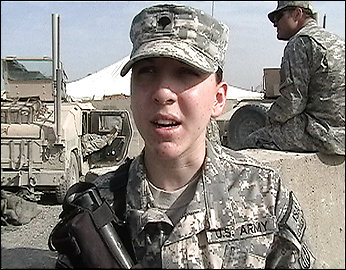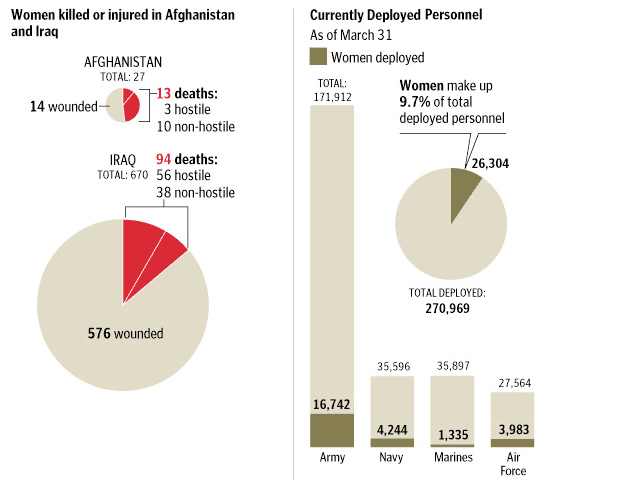Women at war
I encourage you to read this Washington Post article about the extraordinary heroism of 18-year-old Pfc. Monica Brown. She’s only the second female since World War II to receive the Silver Star, our nation’s third-highest combat medal, but the publicity surrounding that honor led to her removal from combat.
In class, we watched this video – Brown and her colleagues describe what happened that day in Iraq:

Army Spec. Monica Brown was awarded the Silver Star for treating wounded soldiers under fire after their convoy was attacked in Afghanistan. She is the second woman to receive the award since World War II. Video by Ann Scott Tyson/The Washington Post Editor: Francine Uenuma/washingtonpost.com
Update: unfortunately, the video no longer plays properly, embedded or on the Post site. In its place, here’s an interview across the miles: CBS News anchor & U.Va. alumna Katie Couric, in New York, speaks with Brown, who’s still serving — and still in Afghanistan:
Further update (2010): for 60 Minutes, Lara Logan sits down face-to-face with Brown — and with the soldiers she saved:
Think back to our discussion of the role of women in World War I. They were deeply involved, from manufacturing weapons and ammunition on the home front, to serving in the nursing corps on the front lines. At the same time as women were making such progress, however, sexist attitudes remained (remember the slogan “The girl behind the man behind the gun!”). Even in today’s U.S. military, women are not technically allowed to participate in combat operations and are not eligible for the draft.
Why do you think such rules remain in place? What attitudes about women do they reflect?
According to the newspaper, U.S. Army policy on women in combat is as follows:
The Army’s policy for female soldiers was set in 1992. It allows women to “serve in any officer or enlisted specialty or position except in those specialties, positions, or units (battalion size or smaller) which are assigned a routine mission to engage in direct combat, or which collocate routinely with units assigned a direct combat mission.”
However, the Post also shares the following charts, which clearly indicate just how many women are indeed deployed in de facto combat zones. According to the Post:
Women in the Line of Fire – Tens of thousands of women are serving in the military in Iraq and Afghanistan, where they are often exposed to combat and required to act in self-defense amid counter-insurgencies with no clear front lines.

 Mr. Brook at AHC
Mr. Brook at AHC





